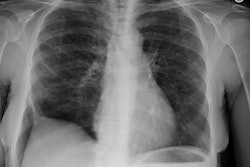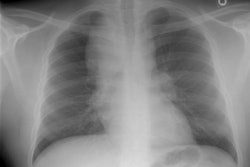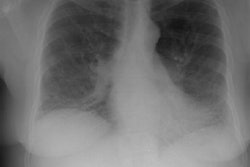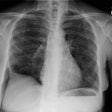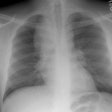Serial computed tomographic evaluation in desquamative interstitial pneumonia.
Akira M, Yamamoto S, Hara H, Sakatani M, Ueda E
BACKGROUND: Desquamative interstitial pneumonia (DIP) may represent the early stage and usual interstitial pneumonia (UIP) the late stage of the same disease. The purpose of this study was to evaluate the computed tomographic (CT) features of DIP, to evaluate the changes in pattern and extent of disease over time, and to determine whether the appearances of DIP on the CT scan change to those of UIP during follow up. METHODS: Sequential CT evaluation was conducted on eight patients with DIP over a mean (SD) follow up period of 3.2 (1.3) years (range 1.6-6.5). The relative extents of ground glass and honeycombing were determined from serial CT scans. Changes in the extent and appearance of the disease were examined in paired anatomically comparable CT sections. RESULTS: Common features on the CT scans of patients with DIP were a homogeneous increase in lung attenuation (n = 5), linear areas of attenuation (n = 5), relatively well preserved lung architecture (n = 5), and the presence of small cysts (n = 6). Uncommon features were architectural distortion (n = 3), and traction bronchiectasis (n = 1). In six patients with DIP with cystic spaces these did not change with time in three cases, in two they regreased, and in one patient they increased. Open lung biopsy samples from patients with DIP with many cystic lesions showed dilated alveolar ducts and bronchioles and/or pulmonary cysts, as well as numerous macrophage-filled air spaces and mild fibrosis, but no typical honeycomb cysts were seen. CONCLUSIONS: Some of the microcysts in DIP are different from the honeycomb cysts seen in UIP, and some of the cysts seen in patients with DIP resolve with time. DIP does not progress to UIP in the short term.
